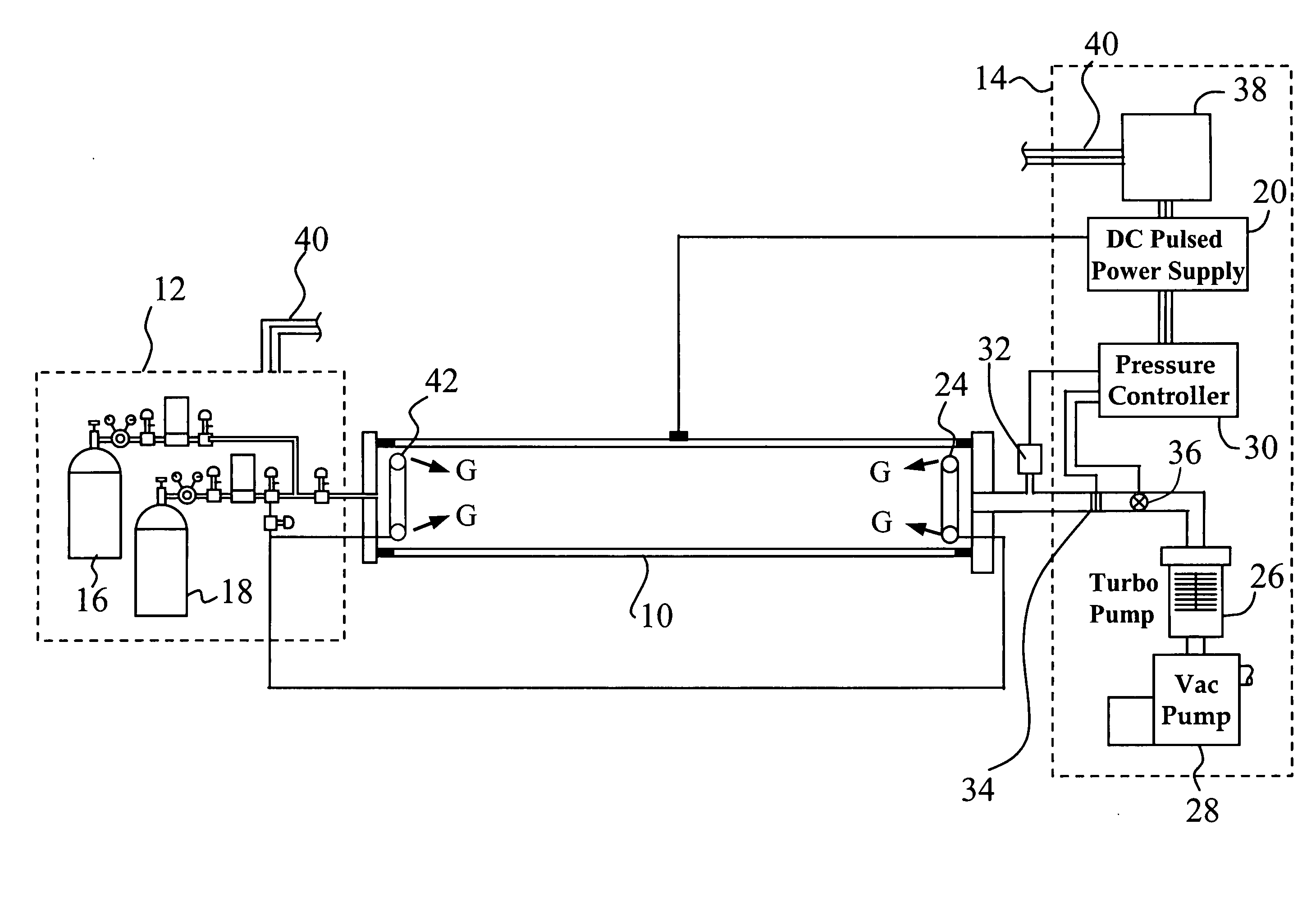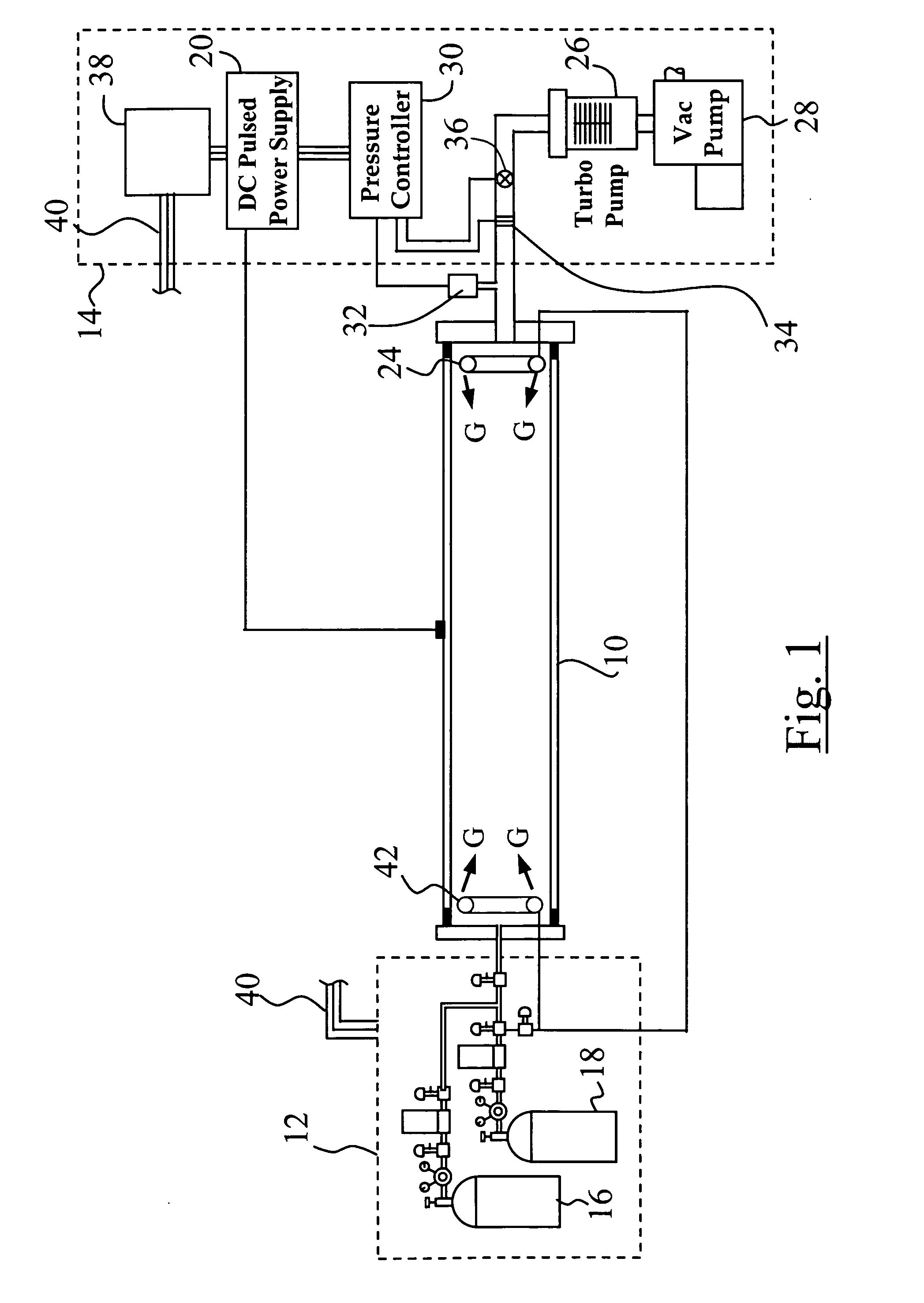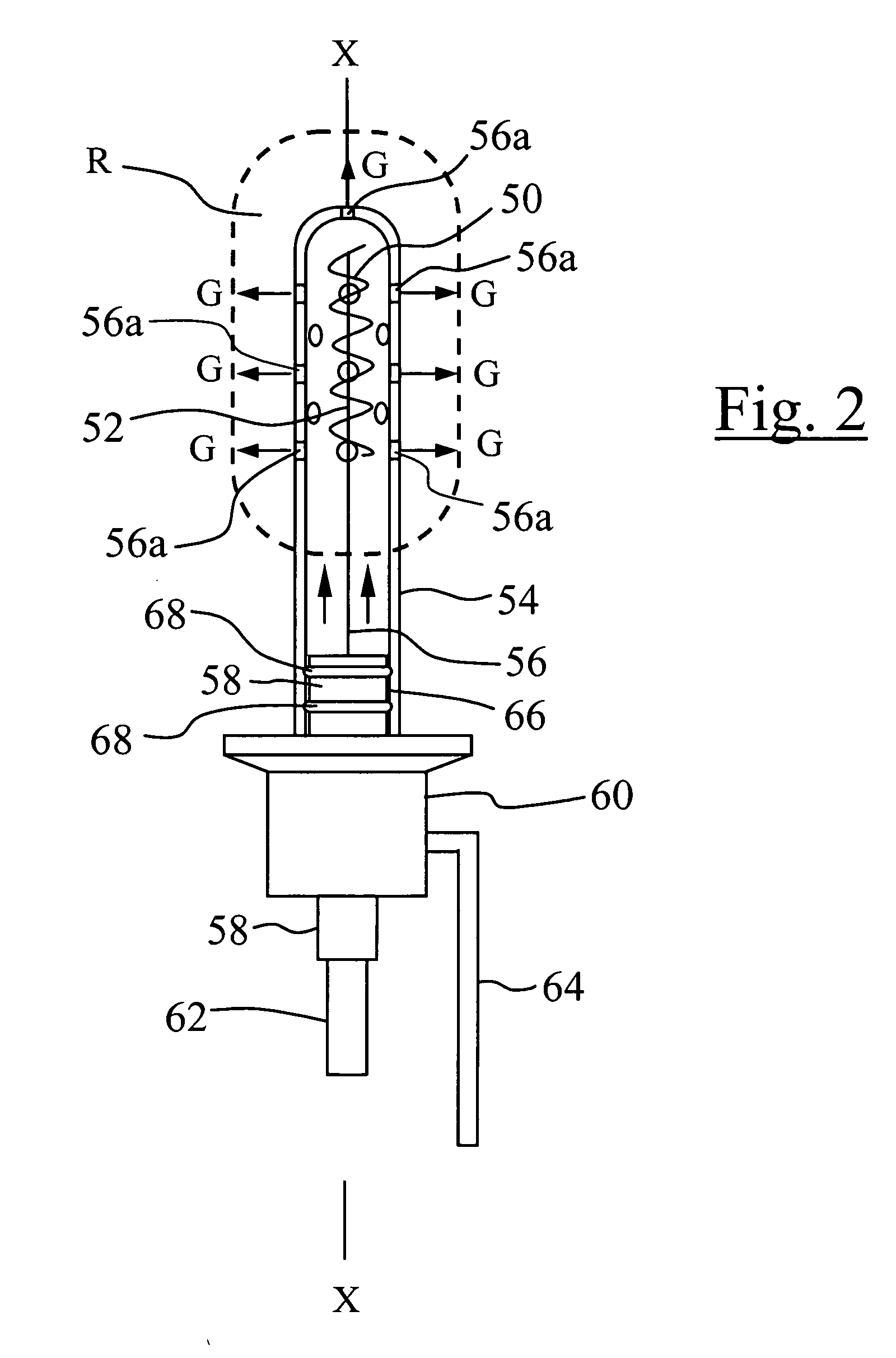Electrode systems and methods of using electrodes
- Summary
- Abstract
- Description
- Claims
- Application Information
AI Technical Summary
Benefits of technology
Problems solved by technology
Method used
Image
Examples
Embodiment Construction
[0023] With reference to FIG. 1, a conductive piping, or “workpiece,”10 is shown as being connected to a system that includes a gas supply subsystem 12 and a process control subsystem 14. The workpiece is shown as a single piece, but may be an assembly of tubes or pipes. A readily available treatment gas, such as methane or acetylene, is provided in a first gas supply container 16. This gas is used in implantation or coating steps described later herein. Argon or any other suitable inert gas fit for the purpose is provided from a second gas supply container 18 to allow plasma “pre-cleaning” of the pipe surface and mixing of Argon (Ar) and treatment gas.
[0024] A DC pulsed power supply 20 is used to apply a negative bias to the workpiece 10. This bias is used to (a) create a plasma between a cathode and a grounded electrode material, (b) draw an ionized reactive gas to the surfaces to be treated, (c) allow ion bombardment of the film to improve film properties such as density and str...
PUM
| Property | Measurement | Unit |
|---|---|---|
| Diameter | aaaaa | aaaaa |
| Length | aaaaa | aaaaa |
| Diameter | aaaaa | aaaaa |
Abstract
Description
Claims
Application Information
 Login to View More
Login to View More - R&D
- Intellectual Property
- Life Sciences
- Materials
- Tech Scout
- Unparalleled Data Quality
- Higher Quality Content
- 60% Fewer Hallucinations
Browse by: Latest US Patents, China's latest patents, Technical Efficacy Thesaurus, Application Domain, Technology Topic, Popular Technical Reports.
© 2025 PatSnap. All rights reserved.Legal|Privacy policy|Modern Slavery Act Transparency Statement|Sitemap|About US| Contact US: help@patsnap.com



